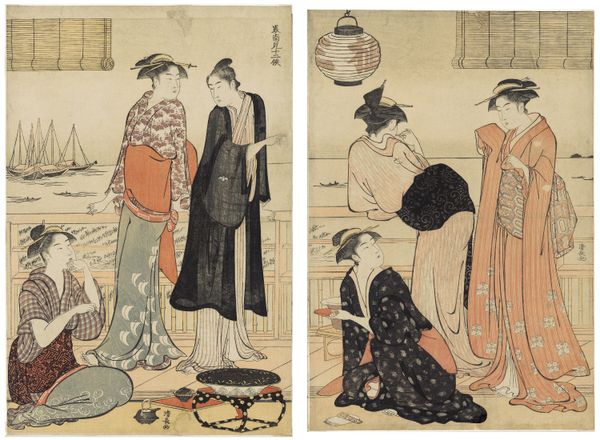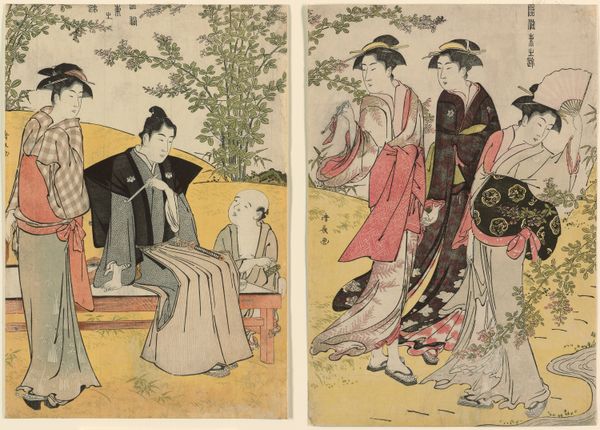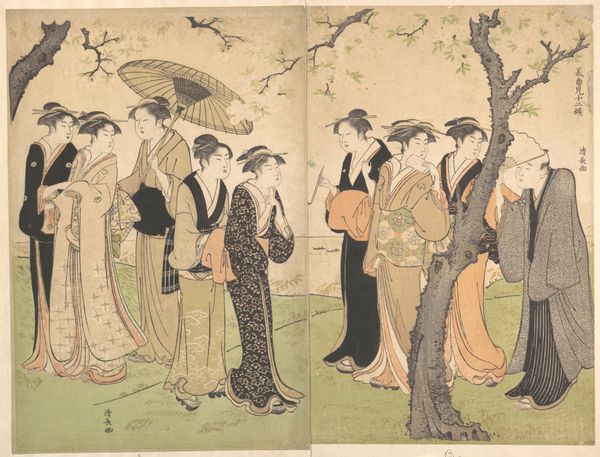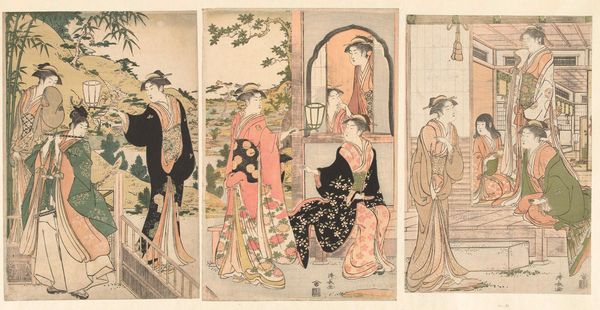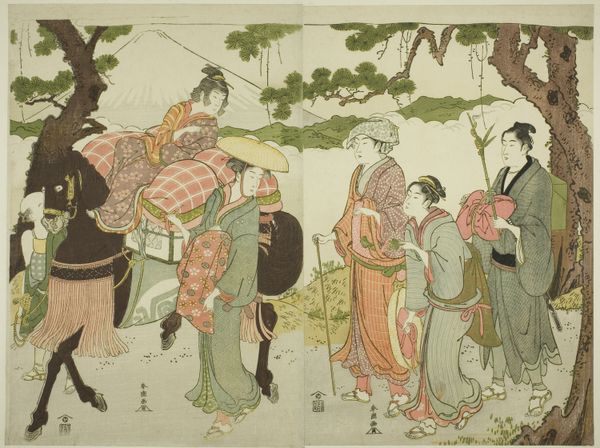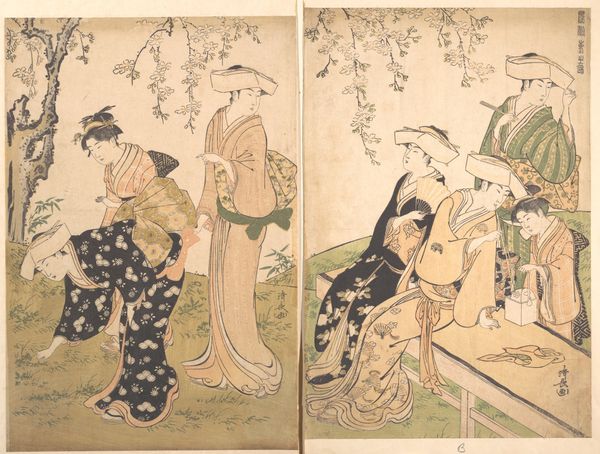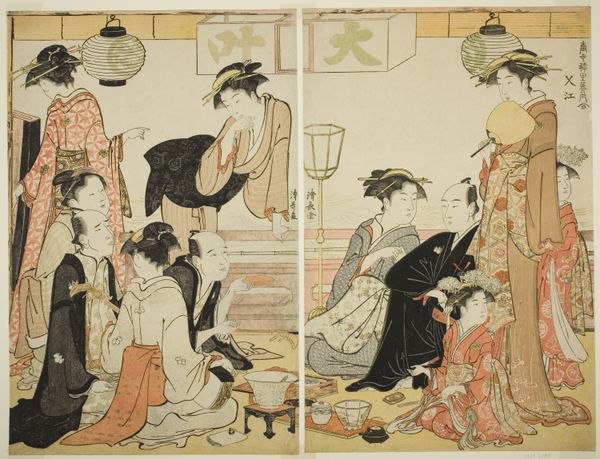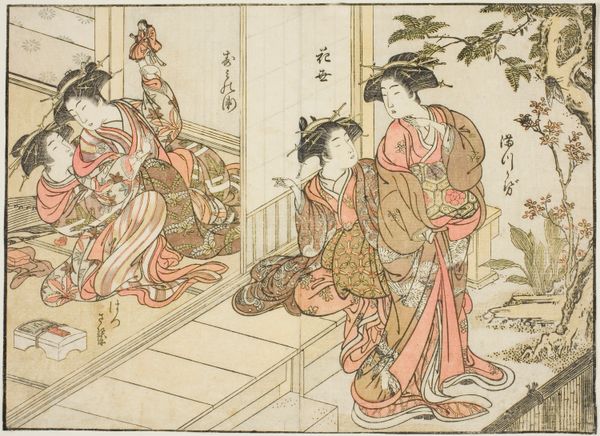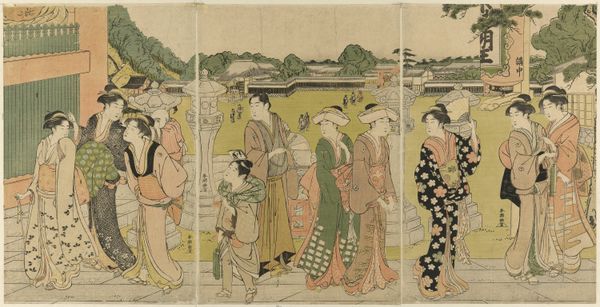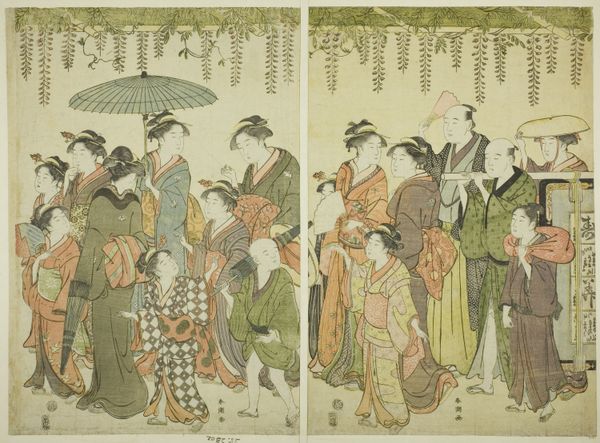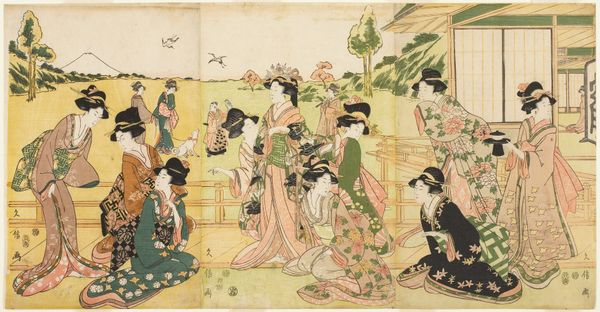
A Parody of Yuranosuke in the Pleasure Quarters (Mitate Yuranosuke yukyo) n.d.
0:00
0:00
print, woodblock-print
# print
#
asian-art
#
ukiyo-e
#
woodblock-print
#
genre-painting
Dimensions: 39.1 × 77 cm
Copyright: Public Domain
Editor: So, this print is "A Parody of Yuranosuke in the Pleasure Quarters" by Chōbunsai Eishi. It's undated, but the medium is listed as woodblock print. I’m struck by how it’s clearly depicting a leisurely scene, maybe even a bit staged. What draws your attention when you look at this piece? Curator: Well, I see a careful construction of an idealized, and perhaps commodified, vision of leisure. Look at the materials used to produce this image – the woodblocks, the inks, the paper itself. These aren’t just passive carriers of an image. The labor and resources that went into creating this print are just as crucial as the scene it depicts. The artist is showing us pleasure, but the actual work speaks of larger societal implications. Editor: That's interesting. I hadn’t thought about the woodblock printing process as part of the subject matter, in a way. The delicate lines almost belie the amount of labor involved. Curator: Precisely. Think about the consumption of these prints. Who was buying them? How were they circulated? This image isn’t just about the lives of women; it’s deeply embedded within a network of production, distribution, and consumption. How does that change your understanding of the image? Editor: It definitely adds another layer, almost like a commentary on the very act of observing this kind of idealized life. Were these prints expensive? Curator: Their cost would vary depending on factors like size, the number of colors used (and therefore the number of woodblocks required), and the artist’s reputation. The market played a central role. So when we talk about value, we have to ask value according to whom, and in what economic context? Editor: I guess looking at it this way makes it much more than just a pretty picture. It’s a product, a representation of status, and a record of its own creation. Curator: Exactly. And by understanding the material processes, the labor, and the systems of commerce, we can move beyond a purely aesthetic appreciation and engage with the complex social reality embedded within the image. Editor: That's definitely given me a fresh perspective on ukiyo-e prints.
Comments
No comments
Be the first to comment and join the conversation on the ultimate creative platform.
